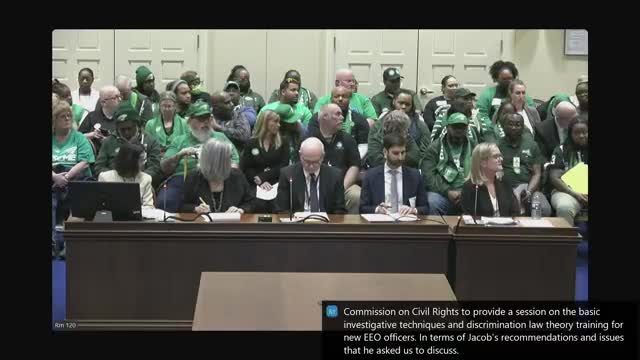DBM implements cost-saving drug protocols amid rising prescription drug expenses
February 26, 2025 | Appropriations Committee, HOUSE OF REPRESENTATIVES, Committees, Legislative, Maryland
Thanks to Scribe from Workplace AI , all articles about Maryland are free for you to enjoy throughout 2025!

This article was created by AI using a video recording of the meeting. It summarizes the key points discussed, but for full details and context, please refer to the video of the full meeting. Link to Full Meeting
DBM officials reported that they closely monitor drug utilization across various therapeutic categories. In January 2024, the department introduced a new protocol aimed at reducing off-label use of certain antidiabetic medications, which has successfully removed these drugs from being among the top three contributors to rising costs. Additionally, some drug manufacturers have significantly lowered prices for select insulin products by approximately 70%, contributing to a downward trend in overall costs.
Despite these efforts, prescription drug expenses continue to rise at a rate higher than other health benefits. The department identified several factors influencing this trend, including inflation, increased utilization, and the mix of drugs prescribed. Notably, specialty drugs, particularly those used for conditions like oncology, psoriasis, and Crohn's disease, represent a substantial portion of the costs. These specialty medications account for 43% of the state's total gross drug costs, despite being utilized by only a small fraction of the population.
The meeting also addressed the structure of member cost-sharing within the state's prescription drug plan. While the plan offers a rich benefit design with low co-payments, this results in a lower cost share for members compared to other employers, standing at just 3.6% of overall costs. For specialty drugs, member cost share is even lower, at only 0.2%.
In response to Jacob's recommendations, DBM agreed to include budget language that would restrict $100,000 pending the receipt of quarterly reports on medical, dental, and prescription costs. DBM acknowledged past delays in submissions and committed to improving the timeliness of these reports moving forward. Additionally, the Department of Legislative Services (DLS) recommended that DBM allocate funds for a supplemental retirement match in the fiscal 2027 budget, a suggestion that DBM also accepted.
This meeting highlighted the ongoing challenges faced by the state in managing prescription drug costs while ensuring access to necessary medications for its residents. The discussions underscored the importance of continued oversight and strategic planning in addressing these financial pressures.
Converted from APP Committee Session, 2/26/2025 #1 meeting on February 26, 2025
Link to Full Meeting
Comments
View full meeting
This article is based on a recent meeting—watch the full video and explore the complete transcript for deeper insights into the discussion.
View full meeting
